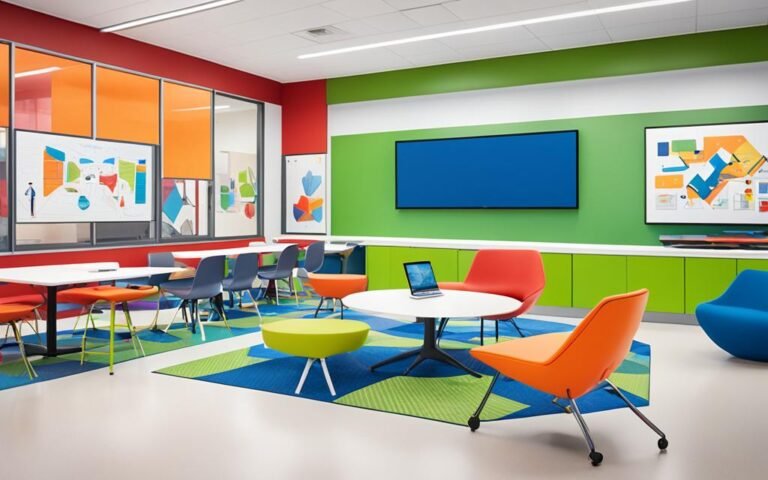
In recent years, the traditional classroom setting in the United Kingdom has seen significant changes. With these modifications, technology was implemented. The use of technology in the classroom has provided students with the opportunity to interact with a variety of learning tools.
The present world is rapidly changing, mainly because technology is very much part of our way of life. Education is among the many fields where technology has revolutionised teaching. Traditional methods have since been replaced with technology to give students better learning experiences, opening up a whole world of possibilities.
Technology has revolutionised almost everything around us. This is evident in many dimensions, among which is education. Integrating technology in the classroom has redefined the learning process and teaching for students and educators. We are demonstrating the benefits of technology in the classroom.
7 Reasons Why Students Need Technology in the Classroom
Enhanced Engagement and Interactivity
Technology offers students interactive and engaging learning. You can use the power of technology to access a high-tech online tutoring platform, which includes multimedia tools, educational apps, and online platforms. A student can take an active part in the learning process.
For instance, online learning tools offer virtual simulations, educational games, and interactive quizzes, making learning enjoyable and effective. Increased engagement enables learners to grasp the subject more profoundly.
Adaptive Learning
All of those could hardly be considered in the traditional classroom. Still, school technology applications offer these opportunities through differentiated and individualised educational approaches regarding pupils’ strengths and weaknesses. However, this kind of personalised approach will ensure that there is just enough challenge and support for each student.
Adaptive learning software is the fundamental tool for providing personalised learning. It uses complex algorithms to monitor learners’ progress, assess their knowledge and skills, and identify areas for improvement. In alignment with this, it generates personalised recommendations for what a student might wish to learn next: what particular topic they should focus on or what supplementary materials they could look at.
Access to a Wealth of Information
All information exists over the Internet; technology has made this happen, and consequently, students can access a sea of information. Using these facilities, students can easily research almost all the subjects that may not be mentioned in their textbooks through online sources and digital libraries.
Therefore, this access to diverse perspectives and information allows for critical thinking, research practices, and independent learning. Using technology in the classroom would be most appropriate since it would enable the students to comprehend current happenings and changes in the world.
Communication Opportunities
A technology-based collaborative learning method must be supported. Students can quickly and conveniently connect and communicate with peers and educators through diverse digital tools and platforms that harness online learning techniques. This develops a collaborative space wherein students can share ideas and indulge in meaningful discussion.
This enables students to question, make comments, and share their experiences with other students. Thus, students can learn from each other through online discussions, see things in a different light, and understand certain things in ways they have never done before.
Preparation for the Digital Age
How relevant is technology to education? In this digital age, technological literacy has become essential for professional work. Therefore, using technology in the classroom gives students skills and a working environment that adequately prepares them for their careers.
Technology in learning equips students with soft skills needed in a swiftly increasing number of industries—from productivity software to coding and data analysis. Making education technological means ensuring our students are prepared for success in the workplace.
Improved Assessment and Feedback
Technology is critical in making the whole process of assessment and feedback easy, efficient, and effective. Online learning technology and platforms with automated grading systems fundamentally change the way educators evaluate student work. This automation saves essential time for the teacher and offers students immediate feedback on their performance.
One of the benefits of this instrument along the student learning path is the instant feedback provided by technology. Students may receive feedback immediately, saving them days or weeks to assess their evaluation. This timely feedback lets them know where they are doing well and what needs work.
Overcoming Learning Barriers
One can easily surpass or address the diversified classroom learning styles through technology. Theoretically, it has the potential to create an inclusive learning environment that opens up a level playing field for students with disabilities and learning difficulties. Most students with disabilities or learning difficulties would benefit, as technology offers instrumental support.
Text-to-speech software makes written content accessible to students with difficulty in reading or for whom it may not be accessible. In contrast, speech recognition software supports students with physical disabilities and enables input of ideas and responses.
Artificially intelligent technology and tools can personalise content delivery and lesson pace according to individual learning characteristics. Such technologies enable learners with disabilities to learn and participate in learning.
Final Thoughts
The provision of technology in the classroom benefits students. It prepares learners to be part of a digital world, improves the assessment and feedback process, and removes barriers to learning. Technology provides learners with tools and resources to build knowledge and thrive in a dynamic world. Remember, technology is a powerful tool that amplifies learning—not a substitute for good teaching.




